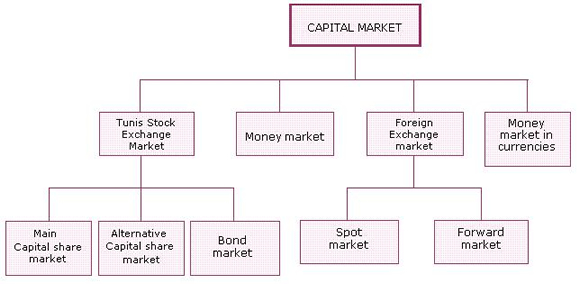Banque Centrale de Tunisie
Banque Centrale de Tunisie radminPresentation of Tunisia
Presentation of Tunisia radmin- Official Name: Republic of Tunisia
- Regime : Presidential
- President of Republic: Mohamed Moncef Marzouki
- Official language: Arabic
- Spoken languages: French (largely used), English and Italian
- Religion: Islam (existence of Jewish and Christian communities)
- Capital: Tunis
- Main cities: Tunis, Sousse, Sfax, Kairouan, Gabès, Bizerte.
- Surface: 163.610 km 2
- Population: 10.216.000 in 2007
- Currency: Tunisian Dinar
- Independence Day: 20 March 1956
- National anthem: Houmat Al Hima
- Internet Field: .tn
- Telephone code: 216
PRESENTATION OF TUNISIAN FINANCIAL SYSTEM

PRESENTATION OF CAPITAL MARKETS IN TUNISIA

The Tunisian Currency through history
The Tunisian Currency through history radminTunisia played, through history, an important economic role. This importance is due, mainly, to the daring activity of its population and its geographical position as a crossroads of maritime ways between the two banks of the Mediterranean and terminus for the Saharan and Eastern trade.
This strategic importance in the international trade made the region a purpose of political conflicts with other powers.
Several historical eras marked the evolution of the Tunisian currency. The main ones are the following:
- the Punic currency: 814 B.C. - 146 B.C.,
- the Numide currency: 208 B.C. - 40 A.D.,
- the Roman currency: 146 B.C. - 439 A.D.,
- the Vandal and Byzantine currency: 439 A.D. - 698 A.D.,
- the Arabo-Islamic currency: 698 A.D. - 1574 A.D.,
- the Husseinite currency and period of French protectorate: 1705 A.D. - 1957 A.D.,
- the currency of the Republic of Tunisia: 1958 till today.
Organization chart of the BCT
Organization chart of the BCT radminMain national indicators
Main national indicators radminKindly click on the following link:
Publications
Publications radmin- Annual report (published in Arabic, French and English): The annual report of the Central Bank of Tunisia is submitted to the President of the Republic by the Governor. The report provides a detailed analysis of the international environment and the national economic activity during the considered year.
- Financial Statistics Bulletin (published in French and English): Provides economic, financial and monetary statistics as well as the methodology followed in their working-out. It is completed by a monthly supplement of the main external payments and financial indicators.
- Supplement of Financial Statistics Bulletin: This bulletin provides the main financial indicators
- The economic situation periodical (published in Arabic, French and English): The economic situation periodical analyses briefly the major events of the national and international climate. It presents also the main economic, monetary and financial measures undertaken during the considered period.
- Tunisia’s External Debt (published in French): The brochure of Tunisia’s External Debt presents a detailed analysis of the country’s outstanding debt trend and structure and a brief outlook on international environment.
- Balance of payments (published in French): The brochure of the balance of payments presents the trend and structure of Tunisia’s economic and financial relations with abroad as well as the regulating measures undertaken during the considered year in external payments.
- Banking Supervision (Published annually in Arabic, French and English): The publication of the first Annual Report of the Banking Supervision comes in the framework of a new tradition of disclosure and transparency based on the rules of good governance and international standards in the area of internal control.
For further information please contact:
The Central Bank of Tunisia
General department of studies and training
Department of documentation, translation and publications
25 Rue Hédi Nouira-BP 777-1080 TUNIS-CEDEX-TUNISIE
Tel.: +216 71 122 000
fax: + 216 71 35 51 30
E-MAIL: bct@bct.gov.tn
Web site: www.bct.gov.tn
Statistics
Statistics radmin
Money and Credit (Data)